Ben Bernanke: helicopter money
description: a term referring to an unconventional monetary policy tool involving the distribution of new money to the public
27 results
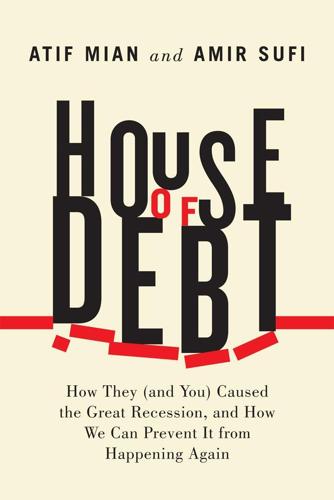
House of Debt: How They (And You) Caused the Great Recession, and How We Can Prevent It From Happening Again
by
Atif Mian
and
Amir Sufi
Published 11 May 2014
The most cited reference to such helicopter drops of money is Milton Friedman, “The Optimum Quantity of Money,” in The Optimum Quantity of Money and Other Essays (Chicago: Aldine, 1969), 1–50. 9. Ben Bernanke, “Japanese Monetary Policy: A Case of Self-Induced Paralysis” (paper, Princeton University, 1999). 10. Martin Wolf, “The Case for Helicopter Money,” Financial Times, February 12, 2013. 11. Willem H. Buiter, “Helicopter Money: Irredeemable Fiat Money and the Liquidity Trap; Or, Is Money Net Wealth after All?” (working paper, January 31, 2004), http://www.willembuiter.com/helinber.pdf. 12. Alan Boyce, Glenn Hubbard, Christopher Mayer, and James Witkin, “Streamlined Refinancings for Up to 13 Million Borrowers” (draft policy proposal, Columbia Business School, Columbia University, June 13, 2012), http://www8.gsb.columbia.edu/sites/realestate/files/BHMW-V15-post.pdf. 13.
…
The idea of directly injecting cash into the economy may at first seem crazy, but reputable economists and commentators have suggested exactly such a policy during severe economic downturns.8 Ben Bernanke, only a few years before he was chairman of the Fed, suggested helicopter drops for Japanese central bankers in the 1990s, earning the nickname “Helicopter Ben.”9 Financial Times columnist Martin Wolf wrote in February 2013 that “the view that it is never right to respond to a financial crisis with monetary financing of a consciously expanded fiscal deficit—helicopter money, in brief—is wrong. It simply has to be in the toolkit.”10 Willem Buiter used rigorous modeling to show that such helicopter drops would in fact help an economy trapped at the zero lower bound on nominal interest rates.11 It would be best if the helicopters targeted indebted areas of the country to drop cash.
…
The increase is equivalent to almost 5 million households owning a home in 2006 that they would not have owned had the ownership rate stayed at its historical average. The increase, however, was as fleeting as the mortgage-credit boom itself: by 2012 the home-ownership rate was back to 65 percent. Strong Economic Fundamentals? In October 2005, as the mortgage-credit boom was reaching its frenzied height, then Council of Economic Advisers chairman Ben Bernanke touted recent advancements in the U.S. economy. As he testified to Congress, “On each of the three indicators of the real economy—GDP growth, job creation, and productivity growth—the United States in recent years has the best record of any industrial economy, and by a fairly wide margin.” Further, the boom in housing and mortgage markets could be explained in large part by these advancements: “House prices have risen by nearly 25 percent in the past two years.
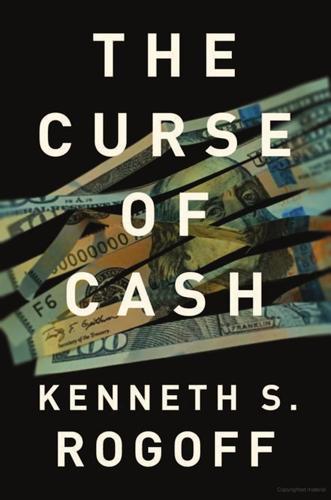
The Curse of Cash
by
Kenneth S Rogoff
Published 29 Aug 2016
This issue is significant, because in practice, it can be hard to credibly promise that a new fiscal program will be temporary: if people don’t believe the program will be withdrawn in a timely manner, the stimulus effect on impact may well be quite modest.13 One idea that has gained some traction is for the central bank to print money and hand it out to consumers. Ben Bernanke suggested this perfectly reasonable paradigm when he was a Fed governor back in 2002 as a solution for Japan’s deflation problem. No good deed goes unpunished, and some critics starting calling him “Helicopter Ben,” because his advice for Japan drew on Milton Friedman’s analogy to dropping money from a helicopter. Lately, the idea has become fashionable again. Lord Adair Turner, former chairman of the United Kingdom’s Financial Services Authority, has advocated central bank–financed transfers in his 2015 book on debt, and the helicopter money often appears in op-eds and the blogosphere as a growth elixir.14 There is nothing fundamentally wrong with the idea.15 However, it is important to realize that helicopter money does not really add any new instruments to the arsenal of macroeconomic stabilization tools.
…
If the economy is at the zero interest rate bound, the only difference is that the central bank would use quantitative easing to mop up the newly issued debt. Helicopter money can only expand the options if it is accompanied by some other institutional change. For example, if the introduction of helicopter money is accompanied by a change in the central bank’s inflation-targeting preferences, then of course there will be added effects. Equivalently, if the advent of helicopter money is accompanied by new legislation that somehow helps the central bank to commit to inflationary finance in the future, that too would make an important difference. In both cases, helicopter money is just a gimmick to effect a policy change that might not otherwise be politically feasible, perhaps leveraging the central bank’s reputation for being conservative to help make fiscal policy more accommodative.
…
The third reason the zero bound has been so problematic is that real interest rates have trended down dramatically, falling below zero at very short horizons, and roughly 1.5% at very long horizons, both well below more “normal” levels. The reasons real interest rates have fallen are many, but some of the main factors include high savings from fast-growing emerging markets and aging populations in advanced economies, factors that in 2005 Ben Bernanke famously pointed to in describing the “global savings glut.”2 Since 2008, intense post–financial crisis regulation and risk aversion have also pushed real interest rates down.3 Another important factor is slower growth. Some economists, such as Northwestern University’s Robert J. Gordon, argue that the root cause of post–financial crisis slow global growth is a sharp trend drop in the rate at which productivity is increasing, due above all to a declining rate of economically valuable inventions.

The Price of Time: The Real Story of Interest
by
Edward Chancellor
Published 15 Aug 2022
The control of inflation, he asserted, was the key element of successful monetary policy. (Ben Bernanke, ‘A Perspective on Inflation Targeting’, the Annual Washington Policy Conference of the National Association of Business Economists, 25 March 2003.) 23. This phrase was coined by the Bank of England Governor Mervyn King. In 2007, King observed that the average deviation of inflation from target was running at ‘just minus 0.08 percentage points’. 24. Greenspan, ‘Risk and Uncertainty in Monetary Policy’. 25. Ben Bernanke, ‘Monetary Policy and the State of The Economy’, hearing before the Committee on Financial Services, US House of Representatives, 2 March 2011. 26.
…
They fail to heed Cantillon’s warning that it’s all very well to embark on a grand monetary experiment, but there is no painless exit. ‘What central bankers are doing now is exactly what Law recommended,’ Law’s biographer Antoin Murphy wrote in the wake of the global financial crisis. ‘From this perspective, it may be argued that, notwithstanding the failure of the Mississippi System, Law’s banking successors have been Ben Bernanke, Janet Yellen and Mario Draghi.’62 5 John Bull Cannot Stand Two Per Cent It is a fact of experience, that when the interest of money is two per cent, capital habitually emigrates, or, what is here the same thing, is wasted on foolish speculations, which never yield any adequate return.
…
The scion of Stuckey’s recommended that during panics the Bank of England should only lend for a short period, against high-quality collateral and should charge a high rate of interest for its money.fn7 The Bagehot rule is much cited by monetary policymakers in the twenty-first century. After the 2008 global financial crisis, US Treasury Secretary Tim Geithner, a former President of the New York Federal Reserve, referred to Lombard Street as the ‘bible of central banking’. In his memoirs, The Courage to Act, Geithner’s former boss, Ben Bernanke, mentions Bagehot more frequently than any other economist.64 When Bernanke’s Federal Reserve and other central banks stepped up as lenders of last resort during the crisis, Bagehot provided the cover for their trillions of dollars’ worth of central bank loans. Yet Bagehot’s stringent conditions were not followed.
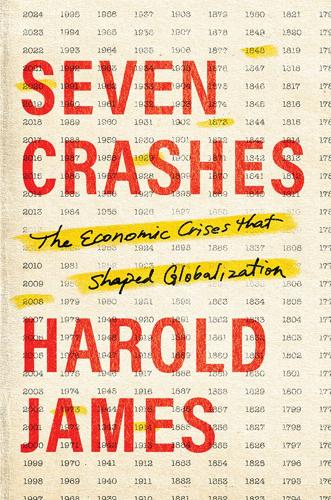
Seven Crashes: The Economic Crises That Shaped Globalization
by
Harold James
Published 15 Jan 2023
Part 3: Helicopter Money,” Brookings Institute blog post, Monday, April 11, 2016, https://www.brookings.edu/blog/ben-bernanke/2016/04/11/what-tools-does-the-fed-have-left-part-3-helicopter-money/. 116. Bob Woodward, Maestro: Greenspan’s Fed and the American Boom (New York: Simon & Schuster, 2000). 117. Sebastian Mallaby, The Man Who Knew: The Life and Times of Alan Greenspan (London: Bloomsbury, 2016), 648. 118. J. Adam Tooze, Crashed: How a Decade of Financial Crises Changed the World (New York: Viking, 2018), 38. 119. Bernanke, Courage, 129. 120. Zachary Karabell, “Our Hero, Ben Bernanke,” Atlantic, December 13, 2012, https://www.theatlantic.com/business/archive/2012/12/our-hero-ben-bernanke-why-central-bankers-not-politicians-are-saving-the-global-economy/266210/. 121.
…
See Tim Congdon, “Did Bernanke’s ‘Creditism’ Aggravate the Financial Crisis of 2008?” in Macroeconomic Theory and Its Failings, ed. Steven Kates (London: Edward Elgar, 2010), 26 –39. 98. Ben Bernanke and Mark Gertler, “Agency Costs, Net Worth, and Business Fluctuations,” American Economic Review 79 (March 1989): 14 –31; Ben Bernanke and Mark Gertler, “Financial Fragility and Economic Performance,” Quarterly Journal of Economics 105 (February 1990): 87–114. 99. Irving Fisher, “Debt Deflation,” Economica 1, no.4 (1933): 337–357. 100. Ben Bernanke, “Japanese Monetary Policy: A Case of Self-Induced Paralysis,” in Japan’s Financial Crisis and Its Parallels to U.S. Experience, ed.
…
The 2007–2008 Global Financial Crisis generated a negative demand shock comparable only to the Great Depression in the major economies of the North Atlantic, while largely sparing the powerful new emerging market economies. The answers generated by central banks, and notably the Federal Reserve under Ben Bernanke, were remarkably successful in avoiding a general collapse, or a repetition of the Great Depression. But they also created an apparently impossible exit problem: how could the policy measures be unwound? Each attempt at unwinding produced new shocks, such as the “taper tantrum” of 2013, when the Federal Reserve debated reducing its security purchasing program and interest rates began to rise.
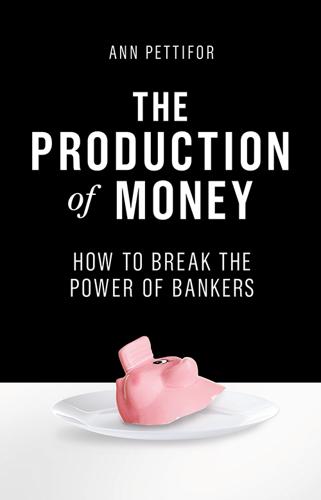
The Production of Money: How to Break the Power of Banks
by
Ann Pettifor
Published 27 Mar 2017
But let us examine the proposals for ‘helicopter money’ more carefully. Just as with calls for the nationalisation of the money supply, the calls for central bankers to use their powers for wider purposes come from across the political spectrum. Positive Money’s economist Frank van Lerven has produced a helpful list of the main protagonists and an excellent overview of the public money creation debate.32 •Strategic QE – Proposed by the New Economics Foundation •Green QE – Proposed by Victor Anderson, endorsed by Molly Scott Cato (MEP) •Helicopter Drop – Proposed by Ben Bernanke (and a number of others) and based on Milton Friedman’s ‘Helicopter Drops’ paper of 1948.
…
Challenging the economics profession Part of the reason there is so much public confusion about money, banking and debt is that the economics profession stands aloof from the financial system, declines (on the whole) to understand or teach these subjects, and arrogantly blames others (including politicians and consumers) for financial crises. As evidence of this arrogance, Professor Steve Keen in Debunking Economics cites the words of Ben Bernanke, governor of the US Federal Reserve at the time of the crisis: ‘the recent financial crisis was more a failure of economic engineering and economic management than of what I have called economic science.’7 The ‘economic scientists’ of the profession (and many on the Left) have also systematically ignored or downplayed the monetary theory and policies of the genius that was John Maynard Keynes – theory and policies that could have averted the 2007–09 crisis.
…
Andrea Terzi, INET Conference, April 2015 Bernanke breaks a taboo The date was 15 March 2009. Just months before, the bankruptcy of an investment bank, Lehman’s, had led to financial mayhem. The 2007–09 Global Financial Crisis was in its earliest stages. But on that day something historically unprecedented happened. Ben Bernanke gave the first-ever broadcast interview by a Federal Reserve bank governor to an American journalist. The journalist was Scott Pelly. The show was CBS’s iconic 60 Minutes. The day before the interview, Mr Bernanke’s Fed – the world’s most powerful central bank – had undertaken something exceptional as part of a routine monetary operation.
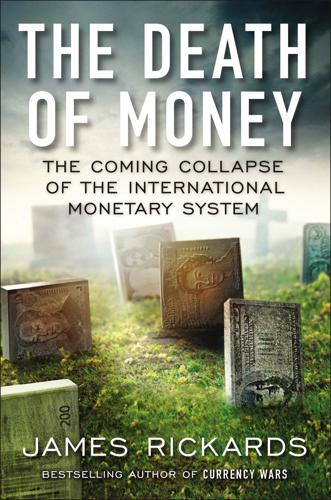
The Death of Money: The Coming Collapse of the International Monetary System
by
James Rickards
Published 7 Apr 2014
His low-rate policy led directly to an asset bubble in housing, which crashed with devastating impact in late 2007, marking the start of a new depression. Within a year, declining asset values, evaporating liquidity, and lost confidence produced the Panic of 2008, in which tens of trillions of dollars in paper wealth disappeared seemingly overnight. The Federal Reserve chairmanship passed from Alan Greenspan to Ben Bernanke in February 2006, just as the housing calamity was starting to unfold. Bernanke inherited Greenspan’s deflation problem, which had never really gone away but had been masked by the 2002–4 easy-money policies. The consumer price index reached an interim peak in July 2008, then fell sharply for the remainder of that year.
…
Investment in new enterprises can also be a catalyst for hiring, which can then boost consumption through wage payments from investment profits. Any impediments to investment will have a deleterious effect on the growth of the overall economy. Lack of investment was a large contributor to the duration of the Great Depression. Scholars from Milton Friedman and Anna Schwartz to Ben Bernanke have identified monetary policy as a leading cause of the Depression. But far less work has been done on why the Great Depression lasted so long compared to the relatively brief depression of 1920. Charles Kindleberger correctly identified the cause of the protracted nature of the Great Depression as regime uncertainty.
…
Beginning in 2010, the United States initiated a cheap-dollar policy, intended to import inflation from abroad in the form of higher import prices on energy, electronics, textiles, and other manufactured goods. The cheap-dollar policy was made explicit in numerous pronouncements, including President Obama’s 2010 State of the Union address, where he announced the National Export Initiative, and former Federal Reserve chairman Ben Bernanke’s Tokyo speech on October 14, 2012, in which he threatened trading partners with higher inflation if they did not allow their currencies to strengthen against the dollar. Since the United States wanted a cheap dollar, it wanted a strong euro in dollar terms. In effect, the United States was using powerful policy tools to strengthen the euro.
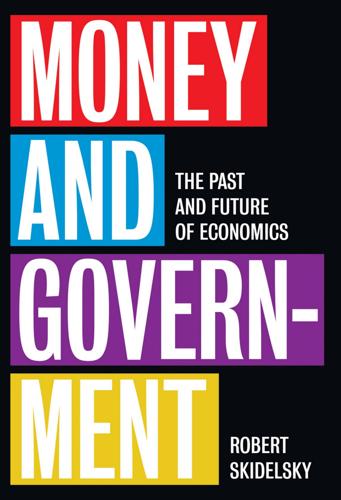
Money and Government: The Past and Future of Economics
by
Robert Skidelsky
Published 13 Nov 2018
Bernanke, B. (2009), Speech at the National Press Club Luncheon, National Press Club, Washington DC. Available at: https://www.federalreserve. gov/newsevents/speech/bernanke20090218a.htm [Accessed 10 July 2017]. Bernanke, B. (2016), What Tools Does The Fed Have Left? Part 3: Helicopter Money. Brookings: Blogs. 14 April. Available at: https://www.brookings.edu/ blog/ben-bernanke/2016/04/11/what-tools-does-the-fed-have-left-part3-helicopter-money/ [Accessed 14 December 2017]. Bernstein, J. (2010), Deficit reduction is not the enemy of jobs. Financial Times, 28 June. Bibow, J. (2010), It is worrying that the German view of austerity is now Europe’s. Financial Times, 28 June.
…
Such action would have eased the severity of the contraction and very likely would have brought it to an end at a much earlier date.16 Friedman and Schwartz blamed the monetary debacle on weak leadership by George Harrison, who had succeeded Benjamin Strong as President of the Federal Reserve Bank of New York. Their conclusion had a powerful effect on those in charge of central banks in 2008, especially Ben Bernanke, Chairman of the Fed in 2007–8. According to Tim Congdon: ‘The monetary interpretation of the Great Recession pivots on the proposition that the collapses in economic activity seen in the worst quarters of 2008 and 2009 were due to falls in – or at any rate sharp declines in the growth rate of – the quantity of money.’17 At the time, Keynes agreed with Friedman’s retrospective analysis.
…
Friedman was not unduly worried.19 Like Keynes, he understood that the best economics could do was to wring ‘reasonable conjectures from refractory and inaccurate evidence’.20 The Friedman–Schwartz view that the Great Depression of 1929– 32 was caused by the failure of the Fed to prevent the collapse of the money supply has become orthodox. It influenced Ben Bernanke, Chairman of the Federal Reserve Board from 2006 to 2014, and the policy of quantitative easing adopted to meet the 2008–9 recession. In addition, just as the depression was caused by the central bank printing too little money, so inflation was due to the central bank 179 T h e R i s e , T r i u m p h a n d Fa l l of K e y n e s printing too much money: ‘inflation is always and everywhere a monetary phenomenon in the sense that it is and can be produced only by a more rapid increase in the quantity of money than in output’. 21 Next in Friedman’s line of fire was the Keynesian stabilization theory.
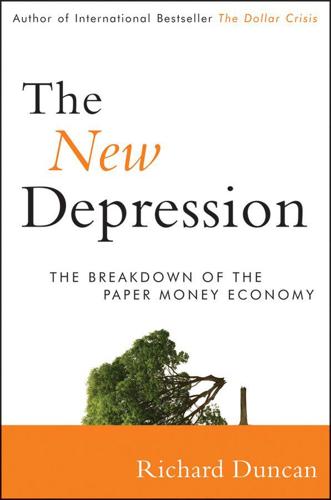
The New Depression: The Breakdown of the Paper Money Economy
by
Richard Duncan
Published 2 Apr 2012
At the Conference to Honor Milton Friedman, University of Chicago, November 8, 2001, on Milton Friedman’s Ninetieth Birthday. 2. Murray N. Rothbard, America’s Great Depression, Ludwig von Mises Institute, first published 1963, p. 13. 3. Remarks by Governor Ben Bernanke, At the Federal Reserve Bank of Dallas Conference on the Legacy of Milton and Rose Friedman’s Free to Choose, Dallas, Texas, October 24, 2003. See also Ben Bernanke’s book, Essays on the Great Depression (Princeton, NJ: Princeton University Press, 2000). 4. U.S. General Accounting Office. Federal Reserve System: Opportunities Exist to Strengthen Policies and Processes for Managing Emergency Assistance, GAO-11-696. 5.
…
Thus, the creation of foreign fiat money and its investment into the United States was the third “financial innovation” responsible for the extraordinary proliferation of credit in the United States in recent decades. EXHIBIT 2.1 Total Foreign Exchange Reserves, 1948 to 2007 Source: IMF Fed Chairman Ben Bernanke blamed the flood of foreign capital entering the country on a global savings glut. That is nonsense. The citizens of other countries did not save so much that they were unable to find profitable investment opportunities at home and therefore were compelled to invest in the United States, as Bernanke’s theory suggests.
…
Financial Account Balance, 1970 to 2007 Source: IMF From 1971 to 2007, total foreign exchange reserves increased by $6.7 trillion. Over the same period, the surplus on the U.S. financial account amounted to $6.3 trillion. The former funded the latter. Such a large surplus on the U.S. financial account could not have occurred had central banks outside the United States not created so much fiat money. Alan Greenspan and Ben Bernanke have frequently attempted to explain the massive surplus on the U.S. financial account by blaming a global savings glut and by citing the overwhelming attractiveness of the U.S. financial markets relative to those elsewhere. The true explanation is that a dozen or so central banks have printed nearly $7 trillion worth of fiat money between 1971 and 2007 (and $3 trillion more subsequently) in order to manipulate the value of their currencies so as to achieve strong export-led growth.
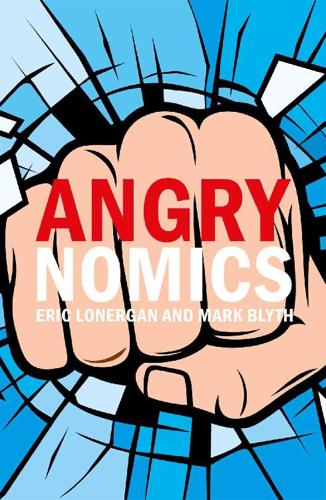
Angrynomics
by
Eric Lonergan
and
Mark Blyth
Published 15 Jun 2020
The big policy stuff was best left to experts in international organizations and independent central banks. Politicians supplied less policy and yet pretended to represent everyone’s interests while doing so.4 This was the world of the 1990s and 2000s, wonderfully described as “the Great Moderation” in 2004 by then Federal Reserve Chair Ben Bernanke, whereby the elimination of politics at the hands of technocrats had delivered prosperity for all.5 There were, as we know now, rather large flaws with this view of the world. Chief among them was that material concerns never went away. Parties simply stopped admitting that they existed. The UK economy doubled in size from 1980 to 2017.
…
The Bank of England and the Bank of Japan have similar lending facilities that could be used to make similar transfers, but it does not appear that under current US law the Federal Reserve would be able to do this. The ECB can do it legally, and probably most other central banks in the world can also. Is there anything else the US can do? Well, Ben Bernanke has suggested that the Fed could have an account at the US Treasury, and when interest rates are close to zero and it wants to provide a further boost to the economy, it just places cash in the account and says “here’s $50 billion or $100 billion – go spend it or distribute it”. MARK: Okay, so we have turned what initially looks like a problem – the threat of deflation and zero interest rates – into an opportunity.
…
, Deutsche Welle, 15 July 2019; https://www.dw.com/en/will-brexit-pollsters-again-help-hedge-funds-make-millions/a-49518827. 4.Jonathan Hopkin & Mark Blyth, “The global economics of European populism: growth regimes and party system change in Europe”, Government and Opposition 54:2 (2019), 193–225. 5.Ben Bernanke, “The Great Moderation”, remarks at the Eastern Economic Association meeting, 20 February 2004: https://www.federalreserve.gov/boarddocs/speeches/2004/20040220/. 6.See Mary O’Hara, “A journey to the sharp end of cuts in the UK”, Austerity Bites; http://www.austeritybitesuk.com. 7.One recent and very large consequence was the way different age cohorts voted in the 2019 UK election; see: https://twitter.com/MkBlyth/status/1207430591622209537. 8.On the costs of the Brexit distraction see https://twitter.com/MkBlyth/status/1208317852018601984. 9.See, for example, “Anger motivates people to vote”, Institute for Social Research, University of Michigan; https://isr.umich.edu/news-events/insights-newsletter/article/anger-motivates-people-to-vote-u-m-study-shows/. 10.See Eric Lawrence, John Sides & Henry Farrell, “Self-segregation or deliberation?
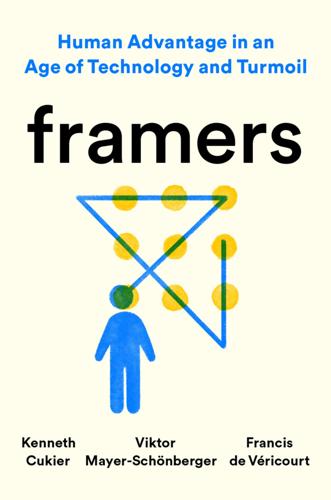
Framers: Human Advantage in an Age of Technology and Turmoil
by
Kenneth Cukier
,
Viktor Mayer-Schönberger
and
Francis de Véricourt
Published 10 May 2021
With constraints, framing goes from the purview of cognition to the basis of actions that matter. That’s seen in how the Israeli military took efforts to build a model of Entebbe’s old terminal for the soldiers to train. Or recall Ben Bernanke at America’s Federal Reserve in September 2008. As he loosened the ideological constraint that the government doesn’t get involved in markets, it allowed him to conjure up the counterfactual of helicopter money and put it into action. Constraints not only help us explain what is happening, they also point us in the right direction for how to respond. People who are exceptional at framing understand that their imagination needs bounds—cognitive curbs, mental manacles—not to interdict their vision but to guide it.
…
,” Economist, October 11, 2013, https://www.economist.com/free-exchange/2013/10/11/who-were-the-physiocrats; Kate Raworth, “Old Economics Is Based on False ‘Laws of Physics’—New Economics Can Save Us,” Guardian, April 6, 2017, https://www.theguardian.com/global-development -professionals-network/2017/apr/06/kate-raworth-doughnut-economics-new-economics. Bernanke’s view of the Fed’s flawed policy after 1929 crash: Ben Bernanke, “Federal Reserve and the 2008 Financial Crisis,” speech given at George Washington University, March 27, 2012, C-SPAN video, 1:15:12, https://www.c-span.org/video/?305130-1/federal-reserve-2008-financial-crisis Ben Bernanke interviewed by Scott Pelley, 60 Minutes, “The Chairman,” March 15, 2009, YouTube video, 13:23, https://www.youtube.com/watch?v=odPfHY4ekHA. The nickname “Helicopter Ben”: Ben Bernanke, “Deflation: Making Sure ‘It’ Doesn’t Happen Here,” speech to the National Economists Club, Washington, DC, November 21, 2002, transcript, https://www.federalreserve.gov/BOARDDOCS/SPEECHES/2002/20021121/default.htm.
…
The country was lucky to have as its chief economic policymaker a person who had prepared for such a calamity most of his professional life. But at the decisive moment, he was thinking inside an alternative box—and saddled with doubts. 3 causality we are causal-inference engines and often wrong, but this is good “I can still stop this,” Ben Bernanke remembers thinking. On the evening of Tuesday, September 16, 2008, he paced his office at the Federal Reserve and stopped at a large window. He looked down at the glowing traffic on Constitution Avenue and the dark silhouettes of elm trees on the National Mall. The previous days had been intense.

The Blockchain Alternative: Rethinking Macroeconomic Policy and Economic Theory
by
Kariappa Bheemaiah
Published 26 Feb 2017
As a result, markets and institutions have exercised a growing influence on the conduct of managers of non-financial firms (Zorn, 2000), and households and non-financial firms have become progressively tangled in financial products and markets. Furthermore, as financialization continued its widespread infiltration, it was widely cited as a good thing under the guise of being a mechanism that allowed us to tame risk. As stated by Ben Bernanke in a speech to the Eastern Economic Association in 2004, “One of the most striking features of the economic landscape over the past twenty years or so has been a substantial decline in macroeconomic volatility…” Along with this cultural transition was the talismanic standing rendered to the importance of credit for economic growth.
…
Shortly after Kashkari’s statements, Janet Yellen, the current chairman of the Federal Reserve, issued a statement that took a stance against the regional Federal bank president, stating, “I certainly have not arrived at the conclusion that my colleague has…. I’m pleased with the way things are going” (Heltman, 2016 ). Three months after Kashkari’s speech, Ben Bernanke published a blog post titled “Ending ‘too big to fail’: What’s the right approach?”, in which the former two-term chairman of the Federal Reserve argued against major structural changes that forced the break-up of large firms, stating that large firms have cost advantages, greater diversification of risk, the ability to spread overhead costs over a variety of activities, and the capability to offer multiple interconnected products and services at a global scale.
…
The greater the volatility, the more likely it is that economies will be face severe downturns requiring central bank interest rate cuts (Rogoff, 2016), and therefore the more likely that we will need to indulge in negative interest rates. Third, an increasing tendency to save in emerging economies coupled with ageing populations in developed economies have had a net effect of reduced investment, and hence further perpetuate low interest rates. This was what Ben Bernanke alluded to when he hypothesised about a “global savings glut.” It is for these reasons that central bankers have been indulging in negative interest rates and debating upon their use. Owing to the rarity of the long-term use of this policy instrument , it remains to be seen whether negative interest rates will be an effective solution to the problems of low inflation and near-zero interest rates.

The Road to Ruin: The Global Elites' Secret Plan for the Next Financial Crisis
by
James Rickards
Published 15 Nov 2016
Some nonbank targets were easy prey, including insurance giant AIG, which almost destroyed the financial system in 2008, and General Electric, whose credit operations were unable to roll over their commercial paper in the panic that year. It was the General Electric freeze, more than Wall Street bank failures, that most panicked Ben Bernanke, Federal Reserve chairman at the time. The General Electric credit collapse spread contagion to all of corporate America, which led directly to government guarantees of all bank deposits, money market funds, and corporate commercial paper. The General Electric meltdown was a white-knuckle moment that governments resolved never to repeat.
…
The president has authority under IEEPA to freeze or seize assets and institutions if there is a threat to national security with a foreign connection. In globalized markets every financial crisis has a foreign connection. Systemic crises threaten national security if allowed to go unchecked. Therefore the bar to use of IEEPA’s confiscatory powers is quite low. Treasury Secretary Hank Paulson and Fed chairman Ben Bernanke have repeatedly said they lacked authority to seize Lehman Brothers during the Panic of 2008. This is false. There was ample authority under IEEPA. Either Treasury’s lawyers didn’t think of it or Treasury chose not to use it. The use of these emergency economic powers and martial law is a more coercive version of the ice-nine plan to freeze accounts in place.
…
By that he meant the ability of central banks to create money as needed to counteract effects of recession and temporarily depressed demand for goods and services. Elastic money meant abandonment of gold and fixed exchange rates because both regimes put limits on central banks’ ability to expand the money supply. Friedman’s views were influential in policy responses to the 2008 global financial crisis and its aftermath by Ben Bernanke, and later Janet Yellen. Friedman’s scholarly research and theory of money were impressive. He earned the Nobel Prize in economics in 1976. Yet Friedman’s assumptions were badly flawed. Policy recommendations based on his work proved defective. Friedman believed in efficient markets and rational expectations, two hypotheses since discredited both by data and by advances in behavioral science.
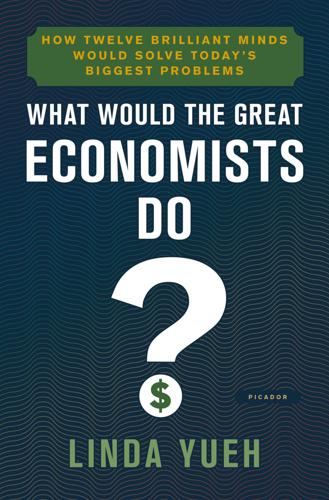
What Would the Great Economists Do?: How Twelve Brilliant Minds Would Solve Today's Biggest Problems
by
Linda Yueh
Published 4 Jun 2018
Japan has undertaken a number of periods of aggressive monetary policies with the central bank injecting cash through quantitative easing (QE) programmes. It seems that the war against deflation cannot be won simply through robust action from the central bank. Combating deflation requires a change in consumer attitudes and firms’ behaviour, so it’s a more complex process than it appears. In a 2002 speech, Ben Bernanke argued that Japan should consider a ‘helicopter money drop’.18 It would inject money directly into the economy; in essence, a free gift of money to citizens. As a permanent gift, it could have a strong impact on consumer and producer expectations of inflation. So far no major central banks or Treasury departments have taken up Bernanke’s suggestion.
…
Keynes identified excessive saving and a lack of aggregate demand as the cause of the ongoing depression, and urged the government to restore full employment through deficit-financed government spending. Ben Bernanke and financial accelerators One of the criticisms of Fisher’s debt-deflation explanation is that price changes simply have a redistributive effect between debtors and creditors. Falling prices result in an increase in the real value of debts, and a transfer of wealth from debtors to creditors. Therefore, creditors gain while debtors lose, but the overall impact on society should be closer to zero. Ben Bernanke, who served two terms as the chairman of the Federal Reserve between 2006 and 2014, and oversaw the US central bank’s response to the 2008 global financial crisis, was previously an academic economist and scholar of the Great Depression.
…
Milton Friedman, 1963, Inflation: Causes and Consequences, Bombay: Asia Publishing House, p. 17. 15. Irving Fisher, 1933, ‘The Debt-Deflation Theory of Great Depressions’, Econometrica, 1(4), pp. 337–57, at p. 349. 16. Ibid., p. 344. 17. Ben Bernanke, 1983, ‘Nonmonetary Effects of the Financial Crisis in the Propagation of the Great Depression’, American Economic Review, 73(3), pp. 257–76. 18. Ben Bernanke, 2002, ‘Deflation: Making Sure “It” Doesn’t Happen Here’, remarks by Governor Ben S. Bernanke before the National Economists Club, Washington, DC, 21 November; www.federalreserve.gov/boarddocs/speeches/2002/20021121/ 19.
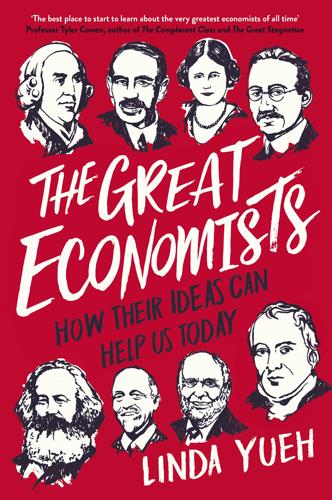
The Great Economists: How Their Ideas Can Help Us Today
by
Linda Yueh
Published 15 Mar 2018
Japan has undertaken a number of periods of aggressive monetary policies with the central bank injecting cash through quantitative easing (QE) programmes. It seems that the war against deflation cannot be won simply through robust action from the central bank. Combating deflation requires a change in consumer attitudes and firms’ behaviour, so it’s a more complex process than it appears. In a 2002 speech, Ben Bernanke argued that Japan should consider a ‘helicopter money drop’.18 It would inject money directly into the economy; in essence, a free gift of money to citizens. As a permanent gift, it could have a strong impact on consumer and producer expectations of inflation. So far no major central banks or Treasury departments have taken up Bernanke’s suggestion.
…
Keynes identified excessive saving and a lack of aggregate demand as the cause of the ongoing depression, and urged the government to restore full employment through deficit-financed government spending. Ben Bernanke and financial accelerators One of the criticisms of Fisher’s debt-deflation explanation is that price changes simply have a redistributive effect between debtors and creditors. Falling prices result in an increase in the real value of debts, and a transfer of wealth from debtors to creditors. Therefore, creditors gain while debtors lose, but the overall impact on society should be closer to zero. Ben Bernanke, who served two terms as the chairman of the Federal Reserve between 2006 and 2014, and oversaw the US central bank’s response to the 2008 global financial crisis, was previously an academic economist and scholar of the Great Depression.
…
Milton Friedman, 1963, Inflation: Causes and Consequences, Bombay: Asia Publishing House, p. 17. 15. Irving Fisher, 1933, ‘The Debt-Deflation Theory of Great Depressions’, Econometrica, 1(4), pp. 337–57, at p. 349. 16. Ibid., p. 344. 17. Ben Bernanke, 1983, ‘Nonmonetary Effects of the Financial Crisis in the Propagation of the Great Depression’, American Economic Review, 73(3), pp. 257–76. 18. Ben Bernanke, 2002, ‘Deflation: Making Sure “It” Doesn’t Happen Here’, remarks by Governor Ben S. Bernanke before the National Economists Club, Washington, DC, 21 November; www.federalreserve.gov/boarddocs/speeches/2002/20021121/ 19.

The Dollar Meltdown: Surviving the Coming Currency Crisis With Gold, Oil, and Other Unconventional Investments
by
Charles Goyette
Published 29 Oct 2009
Snow thought the Chinese needed to take a lesson from us? “They’re just heeding the advice of that ancient Chinese sage Ben Franklin,” I said. “It’s difficult to translate from the original Chinese, but it goes something like this: A penny saved is a penny earned!” But Mr. Snow had been listening to a different Ben, a Princeton economist named Ben Bernanke, who served as chairman of Bush’s Council of Economic Advisers when he offered up his “they save too much” theory. This Ben, now the chairman of the Federal Reserve, and the rest of the Washington wizards know better than Ben Franklin. They would have the Chinese spend their way to prosperity.
…
Gold had its biggest one-day move in history on Wednesday, September 17, roaring up $70 in the market, up a total of $84 in after-market trading; Reserve Primary Fund, the nation’s oldest money market firm, “broke the buck,” its share value falling below the $1.00 money market fund standard, thanks to losses from its holdings of Lehman securities; that day the Commerce Department reported housing starts hit a seventeen-year low in August, down 33 percent from a year earlier. In the midst of events, Treasury Secretary Henry Paulson and Ben Bernanke met with President Bush. It was Thursday, September 18. The New York Times reported months later that Bush wondered aloud that day, “How did we get here?” One wonders whether those in the room were the best people to ask. None of them had been among those raising alarms as the market distortions were put in place.
…
Instead Bush turned to Henry Paulson and his team from Goldman Sachs, despite the fact that under Paulson’s leadership as CEO, Goldman Sachs had been among the industry’s leaders in the issuance of subprime and other mortgage-backed securities, rotten paper that was downgraded scores of times by Standard & Poor’s and Moody’s Investors Service. And Bush followed the counsel of Fed chairman Ben Bernanke, who was on board and at the helm as the Fed frothed up the real estate and mortgage bubbles to begin with. Insufficient Regulation? It has assumed the status of a mantra: The governing classes and their unofficial public relations staff—the nation’s media and commentators—would have it that the housing bubble and credit bust were the result of insufficient regulation.
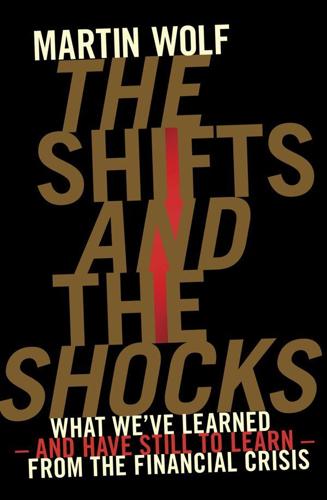
The Shifts and the Shocks: What We've Learned--And Have Still to Learn--From the Financial Crisis
by
Martin Wolf
Published 24 Nov 2015
Gordon Brown, 2004 2 My view is that improvements in monetary policy, though certainly not the only factor, have probably been an important source of the Great Moderation. In particular, I am not convinced that the decline in macroeconomic volatility of the past two decades was primarily the result of good luck, as some have argued, though I am sure good luck had its part to play as well. Ben Bernanke, Governor of the Federal Reserve Board, 20043 The past is a foreign country. Even the quite recent past is a foreign country. That is certainly true of the views of leading policymakers. The crisis that broke upon the world in August 2007, and then morphed into a widening economic malaise in the high-income countries and huge turmoil in the Eurozone, has put not just these countries but the world into a state previously unimagined even by intelligent and well-informed policymakers.
…
The crisis that broke upon the world in August 2007, and then morphed into a widening economic malaise in the high-income countries and huge turmoil in the Eurozone, has put not just these countries but the world into a state previously unimagined even by intelligent and well-informed policymakers. Gordon Brown was, after all, a politician, not a professional economist. Hubris was not, in his case, so surprising. But Ben Bernanke is an exceptionally competent economist. His mistakes were, alas, representative of the profession. In a celebrated speech from February 2004 on what economists called the ‘great moderation’, Mr Bernanke talked about what now seems an altogether different planet – a world not of financial crisis and long-term economic malaise, but one of outstanding stability and superlative monetary policy.4 Moreover, claimed Mr Bernanke, ‘improved monetary policy has likely made an important contribution not only to the reduced volatility of inflation (which is not particularly controversial) but to the reduced volatility of output as well’.5 This now seems quaint.
…
The second is an economic slowdown that has structural roots. The third is the slowdown in China, the world’s most powerful engine of economic growth. The last is the search for export-led growth by high-income economies, particularly in the Eurozone and Japan. The Monetary Normalization of High-Income Economies In May 2013, Ben Bernanke touched publicly on the mere possibility of ‘tapering’, or reducing the rate at which the Federal Reserve was expanding its purchases of US Treasury bonds, which were then $85bn a month.18 This, note, was not an announcement of any reduction in the rate at which the Fed would purchase assets: that was not to come until December, when the Fed announced that it would reduce the rate at which it purchased assets by $10bn a month.19 Also note that this was not an actual tightening.

Shutdown: How COVID Shook the World's Economy
by
Adam Tooze
Published 15 Nov 2021
One obvious interpretation was that the monetization of giant stimulus spending was the belated and long overdue triumph of radical Keynesianism, a return to the logic of so-called functional finance first spelled out in World War II.55 The zealous new school of Modern Monetary Theory rode to prominence on the coattails of Bernie Sanders and his revival of the American left.56 In the UK, there was talk in the circles around Jeremy Corbyn’s Labour Party of “People’s QE” and radical experiments with helicopter money.57 If government spending, whether on welfare or tax cuts, was funded by issuing debt that was ultimately purchased by the central bank, why not cut out the financial sector and simply equip every citizen with a central bank account? Then you could airdrop money to those accounts in a combined and direct fiscal-monetary intervention. As Ben Bernanke would admit in retirement, the main problem with such a policy was “not its economic logic but its political legitimacy.”58 The risk was that the central bank’s money printing power would be abused.
…
According to legend, Powell was picked by Trump to replace Janet Yellen because Trump thought Yellen at five-three was too short to be America’s central banker and Powell cut a more imposing figure.27 He was also wealthy, which Trump liked. What Powell lacked were the impressive academic credentials of either Yellen or Ben Bernanke. In this sense he was a Fed chair for an era no longer in love with expertise. What Powell did have was plenty of experience in business, as a corporate lawyer. He also knew the importance of politics. Powell was nominated to the Fed board in 2011 as a bipartisan candidate after he helped to convince Tea Party diehards in Congress that refusing to authorize new borrowing and forcing the federal government to live hand to mouth from tax revenue would be disastrous.28 Powell was not just a smooth operator.
…
He called an unscheduled press conference and announced that with immediate effect the Fed was cutting interest rates to zero—something that it had done just once before, at the height of the crisis in 2008. To stabilize the market, it would be buying at least $500 billion in Treasuries and $200 billion in mortgage-backed securities, and it would start big.34 By Tuesday, $80 billion would be off the hands of the broker-dealers, more in forty-eight hours than Ben Bernanke’s Fed had bought in a typical month. And to satisfy the global craving for dollars, the Fed would be easing the terms on the so-called liquidity swap lines—deals under which the Fed swaps dollars for sterling, euros, Swiss francs, and yen in potentially unlimited amounts. In effect, the Fed was assuming the role of a central bank to the world, dispensing dollars to every part of the credit system that was tight.
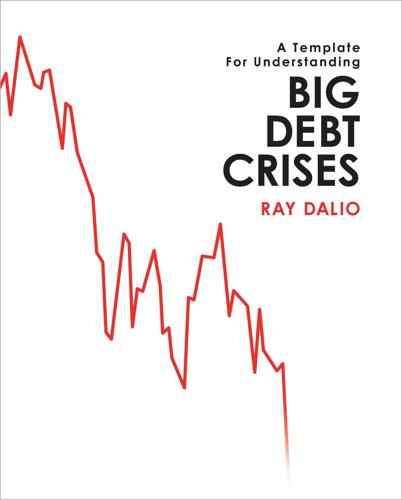
Big Debt Crises
by
Ray Dalio
Published 9 Sep 2018
He came to that job from the position of chairman and CEO of Goldman Sachs, which gave him an exposure to the markets that made him generally concerned about the excesses in the financial markets, so he convened and held regular meetings with the President’s Working Group on Financial Markets, which was comprised of the top members of the Bush economic team and key regulators.4 The primary benefit of these meetings was that they built close working relationships among the members, most importantly between Paulson, Fed Chairman Ben Bernanke, and New York Fed President Tim Geithner, and their agencies. In all financial crises, the personalities, capabilities, and ability to work well together play crucial roles in influencing the outcomes. In this case, the most important relationships were between Paulson (an extroverted former CEO who was used to making bold decisions), Bernanke (an introverted economist who was well-schooled in the Great Depression), and Geithner (a practical operator experienced in the workings of government economic policy making).
…
Many of these were short-term in nature and unregulated and thus were particularly vulnerable. During the bubble, there were five key components that helped fuel leveraging outside the traditional banking system: Use of repo agreements and commercial paper. These developed into huge channels through which banks and corporations could borrow over short periods of time. Ben Bernanke notes that “repo liabilities of US broker dealers increased by a factor of 2.5 in the four years before the crisis.”6 Large institutional depositors outside the protected banking system. Demand for Treasury securities, especially from foreign investors, outstripped supply, so there was a shortage of safe assets for investors.
…
–New York Times July 10, 2008 Sharp Fall for Stocks Amid Angst in Lending “Freddie Mac...was the worst performing stock in the S.& P. 500. Its shares dropped 23.8 percent.” –New York Times July 15, 2008 Stocks Fall Back After Early Gains on Rescue Plan “The United States treasury secretary, Henry Paulson Jr., and the Federal Reserve chairman, Ben Bernanke, acted after the shares of Freddie Mac and Fannie Mae came under enormous selling pressure last week.” –New York Times July 16, 2008 S.E.C. Unveils Measures to Limit Short-Selling “The Securities and Exchange Commission, under pressure to respond to the tumult in the financial industry, announced emergency measures on Tuesday to curb certain kinds of short-selling that aims at Fannie Mae and Freddie Mac, as well as Wall Street banks.”
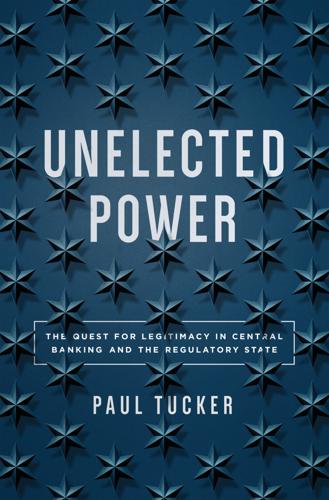
Unelected Power: The Quest for Legitimacy in Central Banking and the Regulatory State
by
Paul Tucker
Published 21 Apr 2018
Lying somewhat beyond day-to-day presidential control, the former are basically immune from executive orders and thus from, for example, a requirement that draft rules be vetted by the president’s Office of Management and Budget.12 Attempts are occasionally made to cajole these “independent agencies” into the elected executive’s sphere, most recently by President Obama through an exhortatory order in 2011, leading to a nice exchange of letters between his officials and Fed chairman Ben Bernanke. But those insulated agencies have largely held the ground provided to them by Congress and the Supreme Court.13 It clearly matters, therefore, what counts as an “independent agency” in this context. The central test in US law is, crudely, whether Congress has given an agency’s top-level decision makers job security.
…
Faced with this, the leaders of a legitimacy-seeking independent agency would rationally put forward proposals for how the sessions could be improved.43 They would also seek out other ways of communicating and interacting with the public, without competing head on, in style or substance, with elected politicians. Federal Reserve chairman Ben Bernanke embarked on something like that during the financial crisis, although the argument I am making is not remotely crisis-specific. Central bankers everywhere are active in giving speeches and media interviews. Some other independent-agency leaders do likewise, but it is perhaps not as widespread as it should be.
…
If those are our general proposals, the question with which we began this book can now be revisited: would the Principles suffice to guard against the central bankers becoming overmighty citizens? THE CENTRAL BANKERS REDUX The precrisis monetary authorities provided a model for truly independent agencies exercising, as former Fed chair Ben Bernanke put it nearly twenty years ago, constrained discretion. Indeed, before the Great Financial Crisis, they were frequently taken as an exemplar of efficient and effective delegation. Today, they risk being hoist on their own petard, having become a politically alluring solution to too many problems for comfort or, indeed, for their inherent capabilities.

Unfinished Business
by
Tamim Bayoumi
Clearly, this highly stylized system was a long way from the reality facing policymakers, even in major advanced countries, let alone the emerging markets that were prone to larger and more varied economic and financial shocks. This stylized vision of macroeconomics did, however, hold an important sway on thinking. This was particularly true for more analytically inclined policymakers such as Ben Bernanke, Chairman of the US Federal Reserve; Timothy Geithner, Head of the US Treasury; Jean-Claude Trichet, President of the European Central Bank; and Mervyn King, Governor of the Bank of England—the first and last being ex-academics, the middle two being trained economists with extensive policy experience.
…
Vestergaard and Retana (2012): Jokob Vestergaard and María Retana, “Behind Smoke and Mirrors: On the Alleged Recapitalization of Europe’s Banks”, Danish Institute for International Studies 2013:10, 2013. Werner (1970): Pierre Werner, “Report to the Council and the Commission on the Realisation by Stages of Economic and Monetary Union in the Community”, (Werner Report), October 1970, available online at the Archive of European Integration. Wessel (2009): David Wessel, In FED We Trust: Ben Bernanke’s War on the Great Panic, Crown Business, New York, 2009. Wolf (2014): Martin Wolf, The Shifts and the Shocks: What We’ve Learned—and Have Still to Learn—from the Financial Crisis, The Penguin Press, London, 2014. INDEX Abe, Shinzo, (i) ABM AMRO (Dutch bank), (i) accounting standards, (i) Alaska (US state), (i) Amalienborg castle, Denmark, (i) Andreotti, Giulio, (i) Anglo-Irish Bank, (i) Argentina, (i) Asia financial crisis (1990s), (i), (ii), (iii) inflows, (i) asset prices and bubbles, (i), (ii), (iii) Australia banking system, (i) seeks to revive MAP, (i) Austria expansion in assets, (i) trade boost, (i) Baer, Gunter, (i) Bagehot, Walter, (i) Baker, James, (i) Balladur, Edouard, (i) Baltic region: banking crashes, (i) Banco Nazionale di Lavoro, (i) Banco Português de Negócios, (i) Bank of America (US bank) assets, (i) as national bank, (i), (ii) as regulated bank, (i) strongly capitalized, (i) Bank Brussels Lambert, (i) Bank of England handles government finances, (i) stabilizes failing banks, (i) Bank Holding Company Act (US, 1956), (i) Bank for International Settlements, (i), (ii) Bank One Corporation (US bank), (i) Bankers Trust (US bank), (i), (ii) Bangkok International Banking Facility, (i) Bankia (Spanish bank), (i) Banking Act (US, 1933), (i) Bankruptcy Abuse and Consumer Protection Act (US, 2005), (i) banks accounting standards and practices, (i) borrowing rates, (i) capital buffers, (i), (ii), (iii), (iv), (v), (vi), (vii), (viii), (ix), (x), (xi), (xii), (xiii), (xiv), (xv), (xvi), (xvii) capital standards, (i), (ii), (iii) collateral in repo deals, (i) commercial and investment separated, (i), (ii), (iii), (iv) deposits and loans, (i) dual system (US), (i) equity and total assets, (i) European interest rates, (i) failures and corrective action (US), (i) government support for, (i) herding, (i) internal discipline, (i), (ii), (iii) liquidity standards redefined, (i), (ii) market opportunities, (i) and North Atlantic crisis, (i), (ii) proposed union in Europe, (i) regulation in Europe, (i), (ii), (iii), (iv), (v) risk models, (i), (ii), (iii), (iv), (v) shadow (US), (i), (ii), (iii), (iv), (v), (vi), (vii), (viii), (ix) system reformed after North Atlantic crisis, (i) US national (interstate), (i), (ii), (iii), (iv) see also central banks Banque de France, (i) Barclays (UK bank) acquires Lehman Brothers post-bankruptcy remnants, (i) backing, (i) competes with major US banks, (i) as LTCM creditor, (i) Baring Brothers (UK bank), (i), (ii) Basel Committee on Banking Supervision and banking regulation, (i), (ii), (iii), (iv), (v), (vi), (vii) and creation of Euro mega-banks, (i) on internal risk models and capital buffers, (i) and market risk, (i) and measures of capital buffers, (i) membership, (i) and repo market, (i) rules upgraded, (i) and US housing market collapse, (i) and voluntary regulation, (i), (ii) Basel 1 Accord, (i), (ii), (iii), (iv) Basel 2 Accord, (i), (ii), (iii) Basel 2.5 system, (i) Basel 3 agreement, (i), (ii) Basel (i), (ii) BBVA (Spanish bank), (i), (ii), (iii), (iv), (v) Bear Stearns (US investment bank) assets, (i) bankruptcy, (i) and European competition, (i), (ii) as investement bank, (i), (ii) lightly capitalized, (i), (ii) merges, (i) as regulated bank, (i) rescued, (i), (ii) and upgrading of Basel (i), (ii) Belgium bank assets, (i) banking expansion, (i), (ii), (iii) banking system (2002), (i), (ii) close economic ties with Germany, (i) debt ratio, (i) in European Coal and Steel Community, (i) and financial crisis, (i) and investment banking, (i) and monetary union, (i), (ii) trade boost, (i) Benelux countries (Belgium, Netherlands, Luxembourg), (i) benign neglect, (i), (ii), (iii) Berlin Wall: falls (1989), (i), (ii), (iii) Bernanke, Ben, (i) Better Regulation Action Plan (UK, 2005), (i) BIS, see Bank for International Settlements Bismarck, Prince Otto von, (i) Black Wednesday (Europe, September 16, 1992), (i) BNP Paribas (French bank) assets reduced, (i) competes with major US banks, (i) expansion, (i), (ii), (iii), (iv) suspends Net Asset Value calculation, (i) BNP Paribas ABS EONIA, (i) BNP Paribas ABS EURIBOR, (i) Brandt, Willy, (i) Brazil debts, (i) exchange rate collapse (1999), (i) Bretton Woods break-up of system, (i), (ii), (iii), (iv), (v), (vi), (vii), (viii) conference, (i), (ii), (iii) fixed exchange rate system, (i), (ii), (iii) and monetary policy, (i) Brexit, (i) broker-dealers, (i), (ii), (iii), (iv), (v), (vi) see also investment banking; USA: shadow banks Brown, Gordon, (i) Bryan, William Jennings, (i) budgets: planning, (i) Buffet, Warren, (i) Bundesbank ceases support for pound and lira, (i), (ii) on cooperation of fiscal and monetary policy, (i) and European exchange rate system, (i), (ii) and European integration, (i), (ii) and European monetary union, (i) and formation of European Central Bank, (i) Frankfurt location, (i) and German reunification, (i) on independence of European Central Bank, (i) raises interest rates, (i) Burns, Arthur, (i) Bush, George W., (i) business cycle, (i), (ii), (iii), (iv) California: house price fall, (i) Canada banking system, (i) in Basel Committee, (i) and Louvre Accord, (i) Case Shiller house price index, (i) central banks and effect of inflation, (i), (ii) failure to apologise for crisis, (i) and fiscal expansion, (i) independence, (i), (ii) and inflation targeting, (i) and monetary policy, (i), (ii) and quantitative easing, (i) responsibility for controlling macroeconomic fluctuations, (i) responsibility for delivering low inflation, (i) revive growth and inflation, (i) role, (i) see also European Central Bank Centre for Economic Policy Decisions, (i) Chaebol (South Korea), (i) Charlemagne, Emperor, (i) Chase Manhattan Bank (US bank), (i) Chemical Bank (US bank), (i) China currency depreciation, (i) Euro area trade with, (i) in G20 group, (i) investments in US, (i) joins World Trade Organization, (i), (ii) rise as economic power, (i) Citigroup (US bank), (i), (ii), (iii) assets, (i) banking model, (i) low capital buffer, (i) as national bank, (i) rescued, (i) strongly capitalized, (i) collateralized debt obligations (CDOs), (i), (ii) Collins amendment (US), (i) see also Dodd–Frank Act Commerzbank (German bank), (i), (ii), (iii) Commodity Futures Trading Commission (US), (i) Comptroller of the Currency (US) see Office of the Comptroller of the Currency Congressional Research Service (US), (i) Consolidated Supervision Entities (CSE), (i) Consumer Financial Protection Bureau (US), (i), (ii) Consumer Protection Act (US, 2010), (i) Continental Illinois Bank and Trust Company (US bank) Bank of America acquires, (i) failure (1984), (i), (ii) Copenhagen European leaders summit (1978), (i) copyright, (i) Council of Governors (Committee of Governors of the Central Banks; Europe), (i), (ii) Cox, Christopher, (i) Credit Agricole (French bank), (i), (ii) Credit Suisse First Boston (Swiss/US bank), (i), (ii) Cummings, Christine, (i) currency unions, (i), (ii) see also European Monetary Union Cyprus, (i) dealers see broker-dealers debt flows (international), (i), (ii) debts: repayment, (i) Declaration of Strengthening the Financial System (G20, 2009), (i) Delors, Jacques advocates strong franc, (i) Committee and Report, (i), (ii), (iii), (iv), (v), (vi), (vii), (viii) and common currency, (i) as President of European Commission, (i) Denmark accepts Basel capital rules, (i) and currency fluctuations, (i) invited to join European Economic Community, (i) rejects European Monetary Union, (i), (ii) in Scandinavian monetary union, (i) Depository Institutions Deregulation and Monetary Control Act (US, 1980), (i) deposits: uninsured, (i) derivatives, (i), (ii) Deutsche Bank (German bank) assets reduced, (i) backing, (i) branches abroad, (i) and capital buffers, (i) capital ratios, (i) competes with US major banks, (i) expansion, (i), (ii), (iii), (iv), (v) international scope, (i) power, (i), (ii) under pressure to accept reform, (i) Deutsche mark appreciates against dollar, (i) dominance, (i), (ii) revalued, (i) Dexia (French/Belgian bank), (i), (ii), (iii), (iv), (v) Dodd–Frank Act (US, 2010), (i), (ii), (iii), (iv) Doha round of trade talks (2001), (i) dollar appreciates (early 1980s), (i) devalued, (i) and fixed exchange rate system, (i), (ii) as central currency, (i) oil priced in, (i) value pegged to gold, (i) Draghi, Mario, (i), (ii), (iii) Duisenberg, Wim, (i), (ii) dynamic stochastic general equilibrium models (DSGE models), (i), (ii), (iii), (iv) East Germany: Ostmarks converted to Deutsche marks, (i), (ii) eastern Europe and labor market, (i) trade with Euro area, (i) economic models distort policymaking, (i), (ii) see also dynamic stochastic general equilibrium models ‘Economists’ (Euro area): differences from ‘Monetarists’, (i), (ii), (iii), (iv), (v) efficient market hypothesis, (i), (ii) Eichengreen, Barry, (i) Emergency Home Finance Act (US, 1970), (i) Emminger, Otmar, (i) employment: and fiscal and monetary policy, (i) Euro area (and Europe) accepts Basel 3 framework, (i) bank assets reduced since 2008, (i) bank internal risk models, (i), (ii) bank lending expansion, (i) bank resolution system (2014), (i) banking system expansion and transformation (1985–2002), (i), (ii), (iii) banking system in 2002, (i), (ii) banking system shrinks since 2009, (i) and banking union, (i) banks fund US housing bubble, (i) banks under ECB supervision, (i) banks’ overseas expansion, (i), (ii), (iii) bond yields, (i), (ii) borrowing rates converge, (i) business cycles, (i) capital gains, (i) causes of financial crisis, (i) causes of regional separation, (i) centralized bank regulation and support, (i), (ii), (iii), (iv) core and periphery banks, (i), (ii), (iii) debt breaks, (i) depression, (i) domestic (national) banking, (i) early national banking system (1980), (i) effect of post-crisis changes on banks, (i), (ii) and exchange rate instability, (i) failure to achieve integrated banking, (i) financial reform in, (i) fiscal deficits limited, (i), (ii), (iii) fiscal policies tightened, (i) foreign banks in, (i) foreign trade, (i) growth forecasts, (i) house prices, (i), (ii) inadequate fiscal buffers, (i), (ii) inflation rates, (i) institutional changes, (i) internal exchange rates, (i) investment spending, (i) labor markets and migration, (i) lends to US, (i), (ii) limited support for troubled banks, (i) mega-banks, (i), (ii), (iii), (iv), (v), (vi), (vii), (viii), (ix), (x), (xi) member countries, (i) monetary (currency) union, (i), (ii), (iii), (iv), (v), (vi), (vii) move to banking union, (i), (ii), (iii) move to economic integration, (i) need for area-wide bank support system, (i) and origins of World War I, (i) outflows, (i), (ii) output losses, (i), (ii) overbanked, (i) political divisions, (i) post 2002 financial boom, (i) product market, (i) and proposed leverage ratios, (i) residential spending, (i) resolution fund for insolvent banks, (i) responsibility for macroprudential policies, (i) single currency, (i), (ii), (iii), (iv), (v) spending boom, (i) stock market fall from 2007, (i), (ii) surveillance of members reduced, (i) trade balance, (i) universal bank expansion in US, (i), (ii) unprepared for crisis, (i) Euro (currency) as boost to integrated economy, (i), (ii) introduced (1999), (i), (ii), (iii), (iv) European Banking Authority (EBA), (i) European Central Bank (ECB) agreed by Delors Committee, (i) aided by expansion, (i) and bank supervision, (i), (ii), (iii) committed to low inflation, (i) effect of, (i) financial supervision centralized in, (i) and Greek debt crisis, (i) guiding principles, (i) ignores US financial problems, (i) injects liquidity into markets, (i) Joint Supervisory Team, (i) and Maastricht Treaty, (i) and move to banking union, (i) non-adoption of leverage ratio, (i) policy rate, (i) raises rates, (i) vets European Stability Mechanism, (i) weakness, (i) European Coal and Steel Community, (i) European Commission Brussels location, (i) confederated structure, (i) created, (i) European Capital Adequacy Directive, (i) and European integration, (i) Monetary Committee, (i) plans for integrated banking system, (i) and proposed monetary union, (i), (ii) rules on excessive debts, (i) Second Banking Directive, (i), (ii), (iii), (iv) and Stability and Growth Pact, (i) vets European Stability Mechanism, (i) European Community Council of Ministers (ECOFIN), (i) European Council, (i), (ii) European Currency Unit (ECU), (i), (ii) see also Euro European Economic Community Common Agricultural Policy, (i) currency fluctuations, (i) customs union, (i) fixed exchange rates, (i) formed, (i), (ii) and free movement of capital, (i) see also European Union European Financial Stabilisation Mechanism, (i) see also European Stability Mechanism European Financial Stability Facility, (i) see also European Stability Mechanism European Monetary Cooperation Fund, (i), (ii) European Monetary Fund, (i), (ii) European Monetary Union (EMU) and bank deposit insurance, (i) design, (i) and fall of interest rates, (i), (ii), (iii) future, (i), (ii) and increasing economic integration, (i) initial members, (i) long-term expectation, (i) Maastricht Treaty initiates, (i) positive effects, (i), (ii) principles and flaws, (i) reduces risk premiums, (i) trade and single currency, (i) European Reserve Fund, (i) European Stability Mechanism (ESM), (i), (ii) European System of Central Banks (ESCB), (i), (ii), (iii) European Union alterations at times of distress, (i) and banking regulation, (i), (ii), (iii), (iv), (v) commitment to closer (federated) union, (i) economy contracts, (i) and free movement of goods, services, labor and capital, (i) implements Basel (i), (ii) integrated banking system, (i), (ii) name adopted, (i), (ii) single currency (Euro), (i), (ii) on supervision of investment banking groups, (i) see also European Economic Community Evian, Switzerland, (i) Exchange Rate Mechanism (ERM) Balladur proposes reforms, (i) and Bretton Woods fixed exchange rate system, (i), (ii), (iii), (iv) crisis (1992-3), (i), (ii), (iii), (iv), (v) and Delors Committee, (i), (ii) and German reunification, (i) introduced, (i), (ii), (iii) suffers from speculative attacks, (i) exchange rates determined by private markets, (i) Europe introduces, (i) and floating exchange rate system, (i) and international debt flows, (i) Fannie Mae (government-sponsored enterprise, US) capital buffers, (i) collapses, (i) dominates securitization market, (i) expansion, (i) formed, (i) issues mortgage-backed securities, (i), (ii), (iii) nationalized, (i), (ii) profits squeezed, (i) upper loan limits, (i) Federal Deposit Insurance Corporation (FDIC, US), (i), (ii), (iii), (iv) Federal Deposit Insurance Corporation Improvement Act (US, 1991), (i) Federal Home Loans Banks (US), (i) Federal Reserve Bank see United States Federal Reserve Bank financial crises causes and effects, (i) and regulation reform, (i) see also North Atlantic crisis financial markets see markets (financial) Finançial Services Agency (UK), (i) Financial Stability Board (earlier Forum), (i) Financial Stability Oversight Council (FSOC, US), (i), (ii) Finland escapes crisis, (i) expansion in assets, (i) trade boost, (i) fiscal policy, (i), (ii), (iii), (iv), (v), (vi) FleetBoston Financial Corporation (US bank), (i) Ford, Gerald, (i) Fortis (Belgium/Netherlands bank), (i), (ii) France agricultural lobby, (i) aims for integrated Europe, (i) bank assets, (i) bank branches in other countries, (i) banking expansion, (i), (ii), (iii) banking system (2002), (i) banking system nationalized under President Mitterrand, (i), (ii) close economic ties with Germany, (i) differences with Germany over monetary union, (i), (ii), (iii), (iv), (v), (vi), (vii) and ERM crisis (1992), (i) in European Coal and Steel Community, (i) and European exchange rate system, (i), (ii) favours political control of central bank, (i) and financial crisis, (i) franc fort policy, (i) high inflation, (i), (ii), (iii), (iv) interest rates, (i) internal risk models, (i) leaves and rejoins snake, (i) and investment banking, (i) outflows, (i) reduces fiscal deficit, (i) and single currency, (i), (ii), (iii) status in European Commission, (i) suspends sanctions for high fiscal deficits, (i) Freddie Mac (government-sponsored enterprise, US) capital buffers, (i) dominates securitization market, (i) expansion, (i) mortgage-backed securities, (i), (ii) nationalized, (i), (ii) profitability, (i) upper loan limits, (i) Friedman, Milton, (i) funding corporations, (i) G7 leaders’ summits, (i) Hokkaido Toyako (2008), (i) Venice (1987), (i) G20 group Chengdu (2016), (i) London (2009), (i), (ii) Pittsburg (2009), (i) and fiscal stimulus, (i), (ii) and Financial Stability Board, (i) and policy cooperation, (i), (ii) and reform of banking system, (i) regular meetings, (i) Geithner, Timothy, (i) General Agreement on Tariffs and Trade (GATT), (i) General Motors: share value, (i) Genscher, Hans-Dietrich, (i), (ii) Germany accepts monetary union, (i) aims for integrated Europe, (i) bank assets, (i) bank branches in other countries, (i) banking expansion, (i), (ii), (iii) banking system (2002), (i) controls inflation, (i) debts move to, (i) differences with France over monetary union, (i), (ii), (iii), (iv), (v), (vi), (vii), (viii) dominance in monetary union, (i) Dutch exports to, (i) empire founded (1871), (i) enforces rules, (i) and European exchange rate system, (i) export-led economy, (i) favours independent central bank, (i) favours national bank supervision, (i) and financial crisis, (i) foreign banks in, (i) interest rates, (i), (ii), (iii) internal risk models, (i), (ii) Landesbanken, (i) and ERM crisis, (i) and investment banking, (i) reluctance to support periphery countries, (i) response to financial crisis, (i) reunification following fall of Berlin Wall, (i), (ii), (iii), (iv) and single currency, (i), (ii) small banks, (i) and snake, (i) status in European Commission, (i) strength of currency, (i) supply chain with eastern Europe, (i) suspends sanctions for high fiscal deficits, (i) tax reforms under Louvre Accord, (i) and value of currency, (i) warns of effect of Greek debt, (i) Giscard d’Estaing, Valérie, (i), (ii), (iii), (iv), (v), (vi) Glass–Steagall Act (US, 1933), (i), (ii), (iii), (iv), (v), (vi), (vii), (viii) Glicenstein, Gilles, (i) globalization, (i), (ii), (iii) gold and Long Depression, (i) standard, (i), (ii) and US dollar, (i), (ii) Gold Pool, (i) Goldman Sachs (US investment bank) applies for bank holding company status, (i) assets, (i) becomes regulated bank, (i) competes as investment bank, (i) and competition with European banks, (i) lightly capitalized, (i) as LTCM creditor, (i) as shadow bank, (i) government borrowing, (i) government-sponsored enterprises (GSEs, US), (i), (ii), (iii), (iv), (v), (vi) Graham–Leach–Bliley Act (US, 1999), (i) Great Depression (1930s), (i), (ii), (iii), (iv) great moderation, the, (i), (ii) Greece accepts Basel capital rules, (i) adopts Euro, (i) fall in interest rate, (i) in currency union periphery, (i) economic recovery program, (i) in Euro area, (i) European aid to, (i), (ii) excessive borrowing and debts, (i), (ii), (iii), (iv), (v), (vi), (vii) expansion in assets, (i) financial crisis in, (i), (ii), (iii) fiscal mismanagement, (i) high interest rates, (i) joins Euro area, (i) loans from other countries, (i) product market improvements, (i) reduces fiscal deficit, (i) role of central government, (i) Greenspan, Alan on bank supervision and regulation, (i), (ii) on bank regulation, (i) favors reform of Basel (i), (ii) and predictability of policies, (i) on risks posed by investment banks, (i) The Age of Turbulence, (i) Group of Ten, (i) GSEs, see government-sponsored enterprises Hawaii, (i) HBV (German bank), (i) hedge funds, (i), (ii) helicopter money, (i) Hoechst (corporation), (i) homo economicus, (i), (ii) Hong Kong: and Asian crisis, (i) house purchases and prices, (i), (ii) see also United States of America households: in economic theory, (i) houses: investment value, (i) Housing and Urban Development Act (US, 1968), (i) HSBC (UK bank): in US, (i) Hugo, Victor, (i) human beings fads and crazes, (i) sociability, (i), (ii) IFRB (accounting standards), (i) IKB Deutsche Industriebank AG (German bank), (i), (ii) Illinois (US state): state banking regulations, (i) incomes: stagnation, (i) Indonesia, (i), (ii), (iii) inflation rates, (i), (ii), (iii), (iv), (v), (vi), (vii), (viii) information technology and financial procedures, (i) and investment banks, (i) ING (Netherlands bank) accepts government capital injection, (i) expansion, (i), (ii), (iii), (iv), (v) Institute for International Finance, (i) insurance: and mortgage-backed assets, (i) interest rates and borrowing costs, (i) capped in US, (i), (ii), (iii) and exchange rate, (i) and inflation, (i) reduced to zero, (i) International Monetary Fund (IMF) and perceived anti-China measures, (i) on benefits from open capital markets, (i) and European Stability Mechanism loans, (i) and exchange rate, (i) funds increased, (i) support in Asia crisis, (i) loans available, (i) as model for European Monetary Fund, (i) output gaps, (i) resources fall behind increase in world trade, (i) on size of global economy, (i) international monetary system debt flows, (i) history of crises, (i) International Swaps and Derivatives Association, (i) Intesa Sanpaolo (Italian bank), (i), (ii), (iii) investment banking see also shadow banking benefit from nontraditional cash deposits, (i) funding, (i) and hedge funds, (i) and information technology, (i) regulation, (i) role and conduct, (i) Ireland accepts Basel capital rules, (i) bankers in, (i) banking expansion, (i), (ii) borrowing excesses, (i) as ‘Celtic tiger’, (i) and currency fluctuations, (i) in currency union periphery, (i) in Euro area, (i) European aid to, (i) invited to join European Economic Community, (i) expansion in bank assets, (i) financial crisis in, (i), (ii), (iii) foreign investments in, (i) ‘light touch’ regulation, (i), (ii), (iii), (iv), (v) reduces fiscal deficit, (i) successful effect of reforms, (i) Italy borrowing interest rate, (i) commercial loans, (i) connected firms in, (i) in currency union periphery, (i) debt ratio, (i) in Exchange Rate Mechanism, (i) expansion in bank assets, (i) financial crisis in, (i), (ii) high interest rates, (i) housing boom, (i) inflation rises, (i), (ii) joins European Coal and Steel Community, (i) large outflows, (i) leaves Exchange Rate Mechanism, (i) low growth, (i) and monetary union, (i) product market improvements, (i) reduces fiscal deficit, (i) supports suspension of sanctions for high fiscal deficits, (i) ten-year bonds, (i) see also lira ITT (corporation), (i) Japan banking system, (i) in Basel Committee, (i) controls inflation, (i) debts outflow to, (i), (ii) depression, (i) economic growth, (i) floating exchange rates, (i) and Louvre Accord, (i) Prime Minister Abe’s economic reforms (‘Abenomics’), (i), (ii), (iii) JP Morgan Chase (US bank), (i) acquires Bear Sterns, (i) assets, (i) banking model, (i) as national bank, (i), (ii) Keynes, John Maynard, (i), (ii) King, Mervyn, (i), (ii), (iii) Kohl, Helmut, (i), (ii), (iii), (iv), (v) Kohn, Donald L., (i) labor markets: Euro area versus US, (i) Lamfalussy, Alexandre, (i) Larosière, Jacques de, (i) Latin America: debt crisis, (i), (ii), (iii), (iv), (v), (vi) Latin League (1865), (i), (ii) Lawrence, T.E.
…
This explains the reliance on “unconventional” monetary policies to boost lackluster economic growth by buying long-term bonds and reducing the short-term policy rate below zero. It also led to calls for central banks to play a wider catalytic role in policymaking, including by encouraging a fiscal boost by promising easy money or even by sending out checks to individuals (so-called “helicopter money”). The desire to use the central bank as a way of inducing a fiscal expansion illustrates the abiding preference of experts for interacting with “technical” independent central banks rather than more “politicized” governments, a preference closely linked to memories of the inflation of the 1970s.
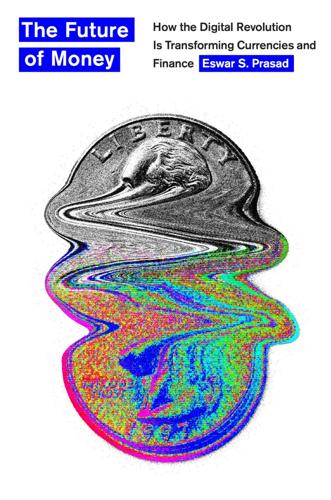
The Future of Money: How the Digital Revolution Is Transforming Currencies and Finance
by
Eswar S. Prasad
Published 27 Sep 2021
Monetary Policy through Helicopter Drops For analytical discussions of helicopter drops and their effects relative to other policies, see Bernanke (2000); Buiter (2014); Turner (2015); and Galí (2020). The following blog posts by Ben Bernanke and Jordi Galí, respectively, provide less technical expositions: Ben S. Bernanke, “What Tools Does the Fed Have Left? Part 3: Helicopter Money,” Brookings Institution (blog), April 11, 2016, https://www.brookings.edu/blog/ben-bernanke/2016/04/11/what-tools-does-the-fed-have-left-part-3-helicopter-money/; and Jordi Galí, “Helicopter Money: The Time Is Now,” VoxEU, CEPR (blog), March 17, 2020, https://voxeu.org/article/helicopter-money-time-now. The March 2020 coronavirus stimulus bill is described in this article: Emily Cochrane and Sheryl Gay Stolberg, “$2 Trillion Coronavirus Stimulus Bill Is Signed into Law,” New York Times, March 27, 2020, https://www.nytimes.com/2020/03/27/us/politics/coronavirus-house-voting.html.
…
A money-financed fiscal stimulus is sometimes more effective than having the government finance its deficit expenditures by issuing more debt that is sold to private investors. The debt-financed approach can lead to higher interest rates, defeating the purpose of the stimulus. But even a money-financed fiscal stimulus could be less efficient than direct helicopter money drops to households and would also run into political complications about who benefits from the government’s largesse and who does not. Moreover, there is some wastage inherent to government spending and some types of spending might prop up economic activity but not afford direct benefits to those most in economic need.
…
NBER Working Paper No. 26300, National Bureau of Economic Research, Cambridge, MA, September. Brunnermeier, Markus K., Michael Sockin, and Wei Xiong. 2017. “China’s Gradualistic Economic Approach and Financial Markets.” American Economic Review 107, no. 5: 608–613. Buiter, Willem H. 2014. “The Simple Analytics of Helicopter Money: Why It Works—Always.” Economics: The Open-Access, Open-Assessment E-Journal 8 (August 21): 14–28. Cagan, Phillip. 1958. “The Demand for Currency Relative to the Total Money Supply.” Journal of Political Economy 66, no. 4: 303–328. Calasso, Roberto. 1998. Ka: Stories of the Mind and Gods of India.
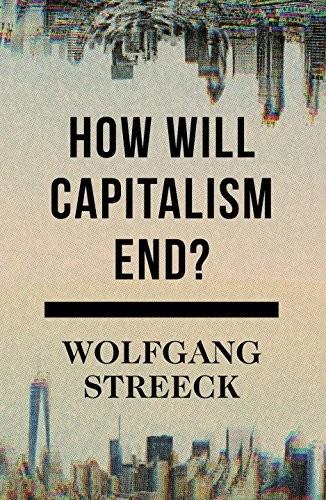
How Will Capitalism End?
by
Wolfgang Streeck
Published 8 Nov 2016
In 2008, the year at the end of which he was widely expected to join the Obama administration as head of the National Economic Council, that fund paid him a respectable $5.2 million for his part-time efforts. During that same year, Summers also collected more than $2.7 million in ‘speaking fees’ from several Wall Street firms, among them $130,000 from Goldman Sachs for one afternoon appearance. When Obama was considering appointing him to succeed Ben Bernanke at the Federal Reserve, Summers removed himself from the list for fear of having to report on his sources of income at his confirmation hearing. 52See ‘Eric Holder, Wall Street Double Agent, Comes in from the Cold’, Rolling Stone, 8 July 2015, rollingstone.com, last accessed 12 August 2015. 53Goldman Sachs was Obama’s second-biggest single supporter in 2008.
…
For an interesting assessment of the applicability of underconsumption theory to post-2008 capitalism, see John Bellamy Foster and Fred Magdoff, The Great Financial Crisis: Causes and Consequences, New York: Monthly Review Press 2009. 33Presumably also because he would have had to declare the substantial income he received from Wall Street firms after his resignation from the Obama administration at the end of 2010. See ‘The Fed, Lawrence Summers, and Money’, New York Times, 11 August 2013. 34The same idea had been put forward in 2005 when Ben Bernanke, soon to follow Alan Greenspan at the Fed, invoked a ‘savings glut’ to account for the failure of the Fed’s ‘flooding the markets with liquidity’ to stimulate investment. Today Summers casually subscribes to the view of Left stagnation theorists that the ‘boom’ of the 1990s and early 2000s was a chimera: ‘Too easy money, too much borrowing, too much wealth.
…
Paul Krugman, ‘Secular Stagnation, Coalmines, Bubbles, and Larry Summers’, New York Times, 16 November 2013, krugman.blogs.nytimes.com, last accessed 4 August 2015). 25If ‘quantitative easing’ continues to have no effect on the economy as a whole, or if central banks have to write off too many of the assets that they have bought with fresh money, the last bullet of monetary policy, and perhaps of policy generally, would be dishing out ‘helicopter money’ to citizens, perhaps by sending each taxpayer a cheque of, say, $3,000, circumventing the banking system in the hope that this would, finally, result in a take-off of effective demand. But it would equally be possible that people will invest their free cash in asset markets, causing another bubble, or was it to deleverage, or stuff it into their mattress.

The Default Line: The Inside Story of People, Banks and Entire Nations on the Edge
by
Faisal Islam
Published 28 Aug 2013
They transformed the discipline and then fanned out across the world transforming Western and then developing economies with their commitment to free markets and sound money. Robert Lucas is one of the Chicago Nobel laureates. He told me that the bailouts were wasted, but that the quantitative easing being practised by Ben Bernanke’s US Federal Reserve was ‘following the Friedman prescription’. He expressed a concern about inflation later down the track, because reversing printing money is ‘hard to do politically’. Lucas said that economists overestimate their abilities: ‘You had a bunch of guys who thought they knew a lot.
…
In turn that raised questions about the real motive behind such a move, with an assertive China suspecting that this was a backdoor dollar devaluation. In the primaries for the US presidential election of 2012, one Republican candidate even suggested that QE was a form of treason, and presidential nominee Mitt Romney promised to fire the Fed chief Ben Bernanke. There is some irony in Washington looking to a London-style QE when there was so little evidence that it had been a success. And, yes, at the same time, influential voices in Britain were pushing for the adoption of a more US-style variety of QE aimed at stimulating a broader range of activity.
…
About £37 billion of QE ‘profits’ were sitting in a Bank of England bank account. The Treasury had initiated talks with the Bank about what it called ‘cash management operations’. Around the time of those talks the interviews for a new governor of the Bank of England were taking place, and there had been some loose talk from some candidates about so-called ‘helicopter money’, which essentially would involve cancelling the debt owed to the Bank in order to fund a boost to Britain’s flagging economy. On 23 October 2012, Sir Mervyn King made the following comments in a speech in Wales, thought at the time to be referring to these radical suggestions about monetary policy.

The Corruption of Capitalism: Why Rentiers Thrive and Work Does Not Pay
by
Guy Standing
Published 13 Jul 2016
According to Matt King of Citigroup, emerging economies accounted for three-quarters of global ‘private money creation’ between 2010 and 2015. Flows of $8 trillion into those economies generated $5 trillion of credit annually.14 Much of that went into fuelling property bubbles at home and abroad. Ben Bernanke, former chair of the US Federal Reserve, and economists at the International Monetary Fund (IMF) are among those arguing that the combination of loose monetary policy, financial innovation and the savings glut in emerging market economies is responsible for housing price bubbles in Britain, the USA and elsewhere.15 This has contributed to the growth of wealth inequality and a revival of landlordism.
…
Before considering them, it is worth commenting on one misguided approach and one great missed opportunity. The misguided proposal is that stagnation justifies ‘helicopter money’, an image first suggested by Milton Friedman in which central banks would print money and throw it out of a helicopter for people to spend. In early 2016, this idea was garnering increasing interest, including from Mario Draghi, head of the European Central Bank. Martin Wolf of the Financial Times concluded that central banks should ‘be given the power to send money, ideally to every citizen’.18 But the main objection to ‘helicopter money’ is that it would leave economic policy in the hands of bankers rather than democratically accountable bodies.
…
Paine, The Political Writings of Thomas Paine, Vol. II (New York: Solomon King, 1830), p. 422. 17 G. Standing, ‘Why basic income’s emancipatory value exceeds its monetary value’, Basic Income Studies, 10 (2), 2015: 193–223. 18 A major hedge-fund guru, Ray Dalio, has argued in much the same way: R. Wigglesworth, ‘Helicopter money on the horizon, says Ray Dalio’, Financial Times, 18 February 2016. A senior staff member of Goldman Sachs has, rather predictably, argued against the idea. F. Garzarelli, ‘Central banks have safer options than a helicopter drop’, Financial Times, 27 April 2016. 19 M. Blyth and E. Lonergan, ‘Print less but transfer more: Why central banks should give money directly to the people’, Foreign Affairs, September/October 2014. 20 This is a point made by other economists, such as Anatole Kaletsky.
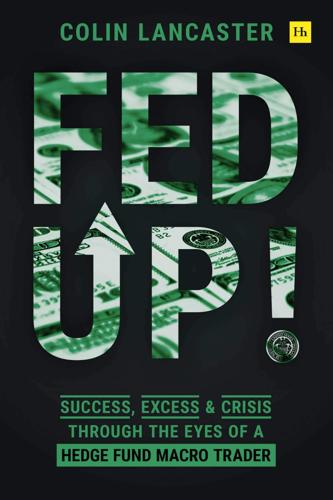
Fed Up!: Success, Excess and Crisis Through the Eyes of a Hedge Fund Macro Trader
by
Colin Lancaster
Published 3 May 2021
Wall Street was getting greedy, and it was all about to pop. Greenspan was lucky. He got out at the top. He retired in 2006, before it all fell apart. It all went to hell soon after.” “I didn’t realize he got out right before the mess.” “Yeah, he got lucky,” I say. “The guy that stepped into the mess was Ben Bernanke. He was chair of the Fed from 2006 to 2014. They call him Helicopter Ben. He bought into the great moderation propaganda in the mid 2000s. He thought things were different this time, and he made some comments that still haunt him to this day. He said ‘subprime was contained’ back in 2007 before the bubble popped.
…
The problem is that she sent the tweet at 1:30 a.m. in the morning. She’s pulling an all-nighter, not reassuring when your local central banker is tweeting in the middle of the fucking night. Back in the USA, Treasury Secretary Mnuchin is trying to get an $850 billion fiscal package approved so he can start sending all Americans a $1,000 check—helicopter money, but not big enough. It will need to be bigger than that to have an impact. Globally, we now have almost 200,000 confirmed cases and 7,954 deaths. Social distancing is the new buzz word. In a sign of the times, Biden and Sanders bumped elbows at their first head-to-head debate. Biden won in Florida, Illinois, and Arizona and continues to build steam.
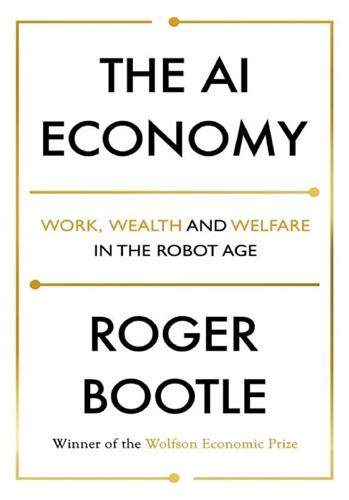
The AI Economy: Work, Wealth and Welfare in the Robot Age
by
Roger Bootle
Published 4 Sep 2019
Although there continue to be marked disagreements among economists about policy details, it is now pretty much the accepted wisdom among policymakers and academics that not only is there the possibility of governments and central banks taking action to prevent and, if necessary, to correct pronounced shortfalls of aggregate demand, but also it is their duty to take such action.8 The candidate measures include increases in government spending, reductions in taxes, cuts in interest rates or increases in the money supply through the policy that has become known as quantitative easing (QE). In the end, if all else fails, there is the option of distributing money to the people gratis – the so-called “helicopter money,” first referred to by Professor Milton Friedman, and recently discussed and advocated by, among others, the former chairman of the Federal Reserve Ben Bernanke. This does not mean that recessions – or even mini-depressions – cannot occur. But it does mean that a really serious depression, such as occurred in the 1930s, is unlikely – unless the authorities take leave of their senses and for political, or ideological, reasons fail to act with sufficient vigor.
…
Accordingly, even if the above argument about the likely effects on the distribution of income and hence on aggregate demand is correct, and there are no offsetting factors, then it is wrong to conclude from this that this is bound to be an epoch of deficient demand and high unemployment. Rather, in these circumstances the onset of the Robot Age would be likely to be the age of expansionary policy. This could include expansionary fiscal policy, QE, or helicopter money. But the first resort of policymakers would surely be the imposition of ultra-low, or even negative, interest rates. (I will discuss likely future interest rates and bond yields in a moment.) Mind you, there are limits to this cocktail of expansionary policies. Sustained budget deficits produce an accumulation of public debt that potentially poses severe problems, including the financial solvency of the state.

The Euro and the Battle of Ideas
by
Markus K. Brunnermeier
,
Harold James
and
Jean-Pierre Landau
Published 3 Aug 2016
The New York Fed intervened in a very unorthodox way to prop up a systemically vital financial institution whose collapse would have destroyed the global financial system: it lent AIG $85 billion in return for 80 percent of its stock as well as providing $20.9 billion in the commercial credit program and a $38 billion facility providing liquidity for the company’s securities. Federal Reserve chairman Ben Bernanke was explicit about how a historical lesson drove the policy response. As he put it, “History teaches us that government engagement in times of severe financial crisis often arrives late, usually at a point at which most financial institutions are insolvent or nearly so.”2 The theoretical point is that monetary policy can shift expectations about future and, hence, current asset values.
…
Inflation Expectations Inferred from the Five Year/Five Year Swap Contract and Size of ECB’s Balance Sheet Alternatives to Lending and Purchase Programs What are potential alternatives to asset purchase programs? Recently, some economists began taking up Milton Friedman’s old idea of a “helicopter drop of money,” that is, a stimulus that would be in effect fiscal. The modern version of helicopter money is sometimes termed “People’s QE,” as it supposedly benefits everyone equally rather than banks and investors. The intrusion of central banks into direct redistribution, however, looks dangerous to many in the German tradition. Otmar Issing stated that the proposal simply reflected intellectual confusion.62 Another alternative to QE would have been a communication policy by the central banks targeted at influencing wage bargaining.